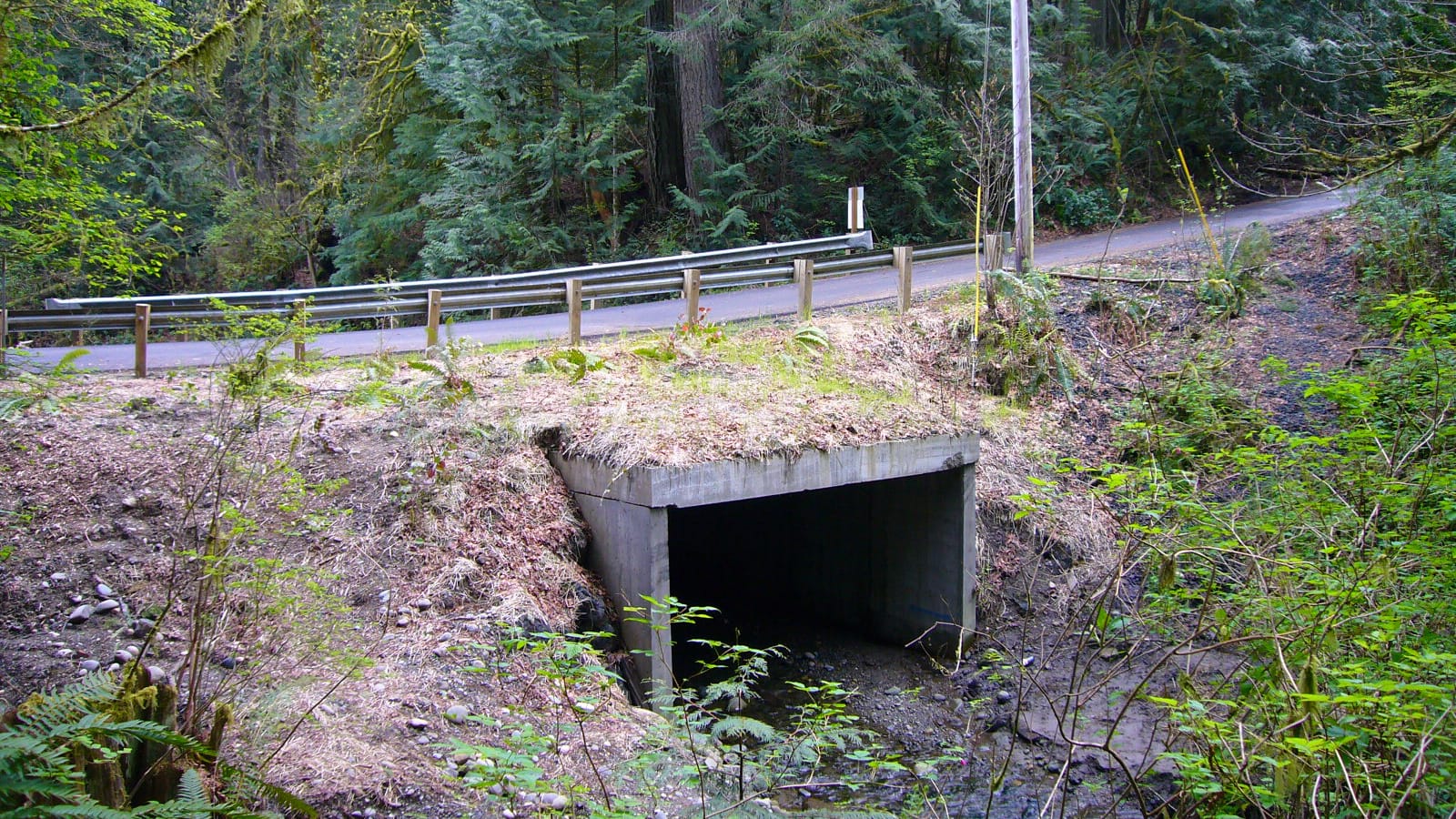

The project area includes Snyder Cove Creek, a perennial, fish-bearing watershed that flows into the east side of Eld Inlet in Thurston County, western Washington State, where the stream is blocked by a fish passage barrier culvert. By interrupting habitat connectivity, even a single barrier can have a disproportionately large impact on the abundance and resiliency of wild fish populations. Removing this barrier would improve access to habitat for coho, chum, resident and sea-run cutthroat, possibly steelhead, sculpin, and lamprey. In addition to blocking fish passage, the undersized barrier culvert has interrupted the natural transport (sediment and wood) processes that were historically present.
WFC staff replaced the undersized, and now failing, 3-foot culvert with a 14-foot wide, 10-foot tall, 45-foot long box culvert that will provide a huge increase in flow capacity and provide wild salmonids access to critical spawning and rearing habitat upstream from the project site.
Effectiveness monitoring was performed by the conservancy and the college for three years post-project. This project complemented a People for Puget Sound feasibility assessment for removing a bulkhead adjacent to the barrier culvert.
Location | Start Date |
|---|---|
Snyder Cove Creek, a watershed that flows into the east side of Eld Inlet, Thurston County, western Washington State | 12/13/2007 |
Project Type | Completion Date |
|---|---|
Fish Passage | 03/28/2010 |
Project Objectives include:
1. Restore anadromous fish passage to almost one mile of functioning, well-protected perennial fish habitat.
2. Restore sediment transport processes that affect the quality of the nearshore environment at Snyder Cove.
3. Restore large wood transport processes that affect the quality of the nearshore environment at Snyder Cove.
4. Revegetate the riparian area within the project site.
5. Evaluate the effectiveness of the passage restoration project over time.
6. Perform outreach and education to encourage environmentally responsible behavior and generate interest in additional fish habitat protection and restoration opportunities.
Primary Habitats Impacted By Project: | Managing Agency/ Organization: |
|---|---|
Riparian Stream Channels | Wild Fish Conservancy |
Project Contact: | Budget or Project Cost: |
|---|---|
Jamie Glasgow | $255,450 |
Funding Sources: | Partners: |
|---|---|
Salmon State Projects, Washington State Grants | Evergreen State College |
Join our mailing list to recieve important updates on our work, the latest wild fish news, & opportunities to take action to support wild fish.
This site is protected by reCAPTCHA and the Google Privacy Policy and Terms of Service apply.
Wild Fish Conservancy is recognized as a 501(c)3 non-profit by the IRS